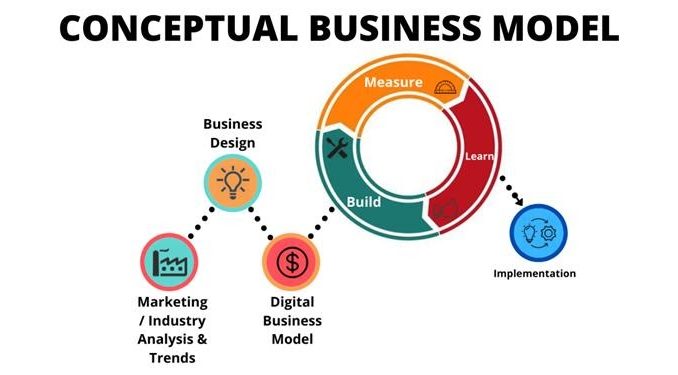
Understanding business models is essential for anyone involved in entrepreneurship or business management. At its core, a business model describes how a company creates, delivers, and captures value. It provides a framework for understanding the fundamental aspects of how a business operates and makes money. While the concept might seem abstract at first, breaking it down with clear explanations and examples makes it much more accessible and practical.
A business model essentially answers key questions: What is the product or service? Who are the customers? How does the company make revenue? And what resources and processes are required to deliver the offering? These questions help clarify the mechanics behind a company’s success or challenges. For instance, consider a local coffee shop. Its business model revolves around selling beverages and snacks to neighborhood customers, generating revenue through daily sales. The resources include skilled baristas, quality ingredients, and a welcoming physical space. This simple model highlights how everyday businesses align their activities to create value.
When we explore business models across industries, it becomes clear that there isn’t a one-size-fits-all approach. Instead, various types have emerged, each tailored to different market conditions and customer needs. One widely known model is the subscription-based business. Companies like Netflix and Spotify rely on recurring payments from customers who gain continuous access to their content libraries. This model offers predictable revenue streams and fosters customer loyalty. It also shifts the focus from one-time sales to long-term relationships, encouraging businesses to keep improving their offerings.
Another popular business model is the marketplace or platform approach. This model connects buyers and sellers without necessarily owning the inventory. Think of companies like Airbnb or eBay. These platforms provide a space where individuals or businesses can transact, while the platform provider earns commissions or fees. The strength of this model lies in its ability to scale quickly and leverage network effects—the more participants join, the more valuable the platform becomes for everyone. However, managing trust and quality control in these ecosystems is crucial for sustained success.
Freemium models have also gained traction, particularly in the tech industry. This approach offers basic services for free, attracting a large user base, while charging for premium features or advanced functionality. LinkedIn and Dropbox are good examples. The free tier encourages widespread adoption and builds brand awareness, while the paid tiers generate revenue. This model requires balancing the value between free and paid offerings to convert enough users without undermining the overall user experience.
Retail businesses often follow the traditional product sales model, where revenue comes directly from selling physical goods. Whether it’s a boutique clothing store or a large e-commerce site like Amazon, the focus is on sourcing or producing goods, managing inventory, and reaching customers effectively. What differentiates one retail business from another can be the product selection, pricing strategy, customer service, or delivery speed. Innovations such as direct-to-consumer sales or subscription boxes show how this model can evolve with changing consumer preferences.
Service-based business models focus on delivering expertise, labor, or specialized support to clients. Consulting firms, law offices, and home repair companies fall into this category. Their value proposition lies in the skills and knowledge they bring, often charging fees based on time, projects, or outcomes. This model depends heavily on building trust and relationships, as reputation plays a significant role in attracting and retaining clients. Additionally, many service businesses are now incorporating technology to enhance efficiency and scale their impact.
Hybrid models combine elements from multiple approaches to create unique value propositions. For example, some companies blend product sales with subscriptions, like a razor blade company that sells the handle upfront and delivers replacement blades on a subscription basis. Others integrate marketplace features with service offerings to provide comprehensive solutions. These combinations can provide competitive advantages but also require careful coordination to ensure all parts work seamlessly together.
It’s important to recognize that business models are not static. Successful companies often adapt or reinvent their models in response to market shifts, technological advancements, or customer feedback. Apple is a prime example, evolving from a personal computer maker to a leader in consumer electronics, software, and services. Its ecosystem approach, combining hardware sales with software and subscription services like Apple Music and iCloud, demonstrates how layered business models can drive sustained growth.
In addition to understanding different types of business models, grasping how to evaluate and innovate them is critical. Entrepreneurs should consider factors such as market demand, competitive landscape, cost structures, and scalability when designing or revising their models. Testing assumptions through pilot programs, customer feedback, and financial analysis helps refine the approach before full-scale implementation. This iterative process reduces risk and increases the chances of long-term success.
In conclusion, business models provide a blueprint for how companies operate and generate value. By studying various models and real-world examples, business leaders can gain insights into what works and why. Whether it’s a subscription service fostering loyalty, a marketplace enabling connections, or a traditional retail setup adapting to new trends, the right business model aligns resources, customer needs, and market opportunities effectively. Understanding and continually refining this framework is fundamental to thriving in today’s dynamic business environment.